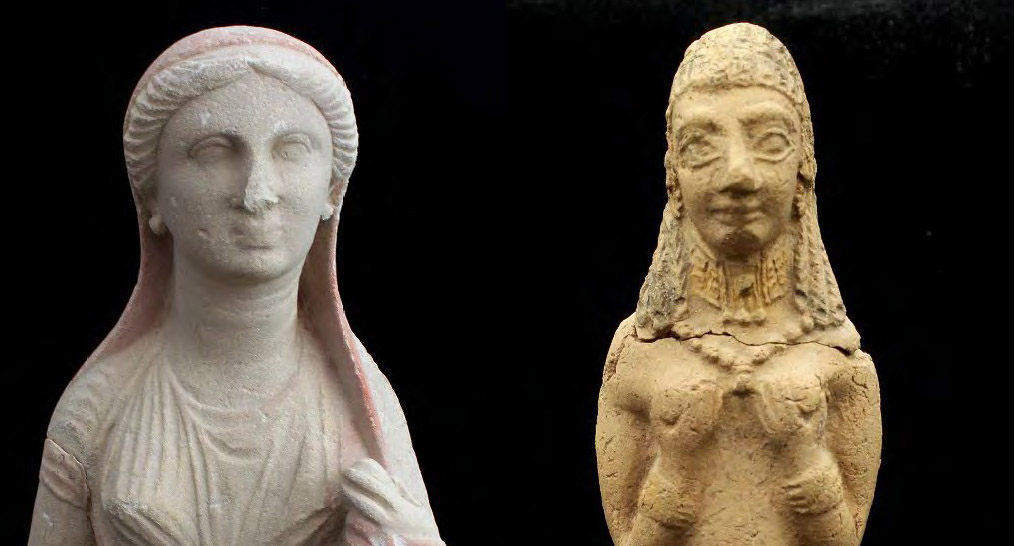After more than 130 years of research, the hypothesis that placed the sanctuary of the great goddess of Idalion, sung in Hellenistic and Roman poetry, on the top of the hill of Moutti tou Arvili, seems confirmed, the department of antiquities said on Tuesday.
The comment marked the completion of the 2024 excavation season at the site in Dali by the Berlin-Idalion-Project (BIP), the Humboldt-Universitaet zu Berlin (Germany) and the University of Cyprus, which ran from September 10 to October 10.
Work focused on the upper plateau of Idalion-Moutti tou Arvili, the so-called eastern acropolis, and more specifically on an area where since the late 19th century a sanctuary of the great Cypriot goddess is supposed to have existed.
“During this year’s excavations, the remains of quite substantial architecture were discovered”, it said. “A well-built wall, that we have been able to follow over roughly 20m of length in the past years and that seems to correspond to the northern limit (temenos) of the sanctuary, forms the corner of a building in this year’s excavation area,” it added.
Several consecutive layers containing substantial amounts of pottery, mainly of the Hellenistic period, were also discovered.
In some cases, there were remains of animal bones in pottery vessels, indicating the corridor between the building and one adjacent to it must have been used either for preparing, consuming, or storing food.
A lot of limestone and terracotta figurines were also discovered, “all of very good workmanship,” the department said.
“Interestingly, at a certain moment, that – according to the results of previous years – we can date roughly around 500 BCE, a new floor level was created in that area, incorporating complete limestone statuettes of the Cypro-Archaic period, packed in a hard layer of mortar.”
Several complete or nearly complete statuettes were found in the floor layer, “as if they were intentionally deposited”. In a higher layer, sculptures from the Cypro-Archaic to the Hellenistic period were found.
One of the most remarkable is a 40cm tall limestone statuette. “It shows a woman wearing a chiton and a himation with vivid red colours at its respective ends. The himation covers also the back of the head, leaving visible the front curls of the hair and the ears with earrings,” it added.
The left arm is bent towards the left breast and with her left hand holds the himation and an oval object, possibly an egg. Either trapped by or hanging from her left forearm is a flat, round object, maybe a mirror, the department said.
“The right arm hangs down the right flank of the body and originally held an object that is now lost, but remains are visible on her right thigh, shortly above the knee. Her right wrist is adorned by a bracelet.”
In terms of general posture and outline, the statuette shows similarities with a Hellenistic life-size statue found at the same spot in the 19th century and now in the Louvre in Paris. Like the Louvre statue, this smaller example should date to the Hellenistic period and represent either the goddess Aphrodite herself or an adorant, it said.
As far as the divinity of the sanctuary is concerned, “this year’s excavation added few new elements”. “For the Cypro-Archaic period we dispose of some iconographic information such as crowns from terracotta statues with lunar and solar symbols, but also figurines of the type of the naked woman holding her breasts.”
This type likely indicates a “cult of the great Cypriot goddess, including aspects of the near eastern Astarte.”
A potsherd from this year’s excavation, showed the remains of an incised Greek alphabetic inscription, apparently applied before firing. The preserved parts shows the letters ᾼΦΡΟΔ[…], hardly leaving any doubt as for the main deity of the sanctuary.”
Therefore, the press release concluded, after more than 130 years of research, the hypothesis that placed the sanctuary of the great goddess of Idalion, sung in Hellenistic and Roman poetry, on the top of the hill of Moutti tou Arvili, seems confirmed.







Click here to change your cookie preferences